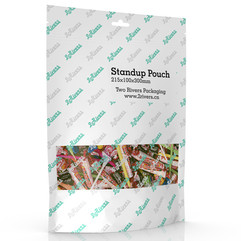What Are Consumer Packaged Goods?
Consumer packaged goods (CPG) are items used daily by average consumers that require routine replacement or replenishment, such as food, beverages, clothes, tobacco, makeup, and household products.
While consumer demand for CPGs largely remains constant, this is nevertheless a highly competitive sector, due to high market saturation and low consumer switching costs, where consumers can easily and cheaply switch their brand loyalties.
Understanding Consumer Packaged Goods (CPG)
Despite experiencing a slow-down in growth over recent years, the CPG industry is still one of the largest sectors in North America, valued at approximately $2 trillion, led by well-established companies like Coca-Cola, Procter & Gamble, and L'Oréal.1 Although CPG makers generally enjoy healthy margins and robust balance sheets, they must continuously fight for shelf space in stores, and they must ceaselessly invest in advertising, in an ongoing effort to increase brand recognition and stimulate sales.
KEY TAKEAWAYS
Consumer packaged goods (CPG) are items used daily by average consumers that require routine replacement or replenishment, such as food, beverages, clothes, tobacco, makeup, and household products.
Despite experiencing a slow-down in growth over recent years, the CPG industry is still one of the largest sectors in North America, valued at approximately $2 trillion, led by well-established companies like Coca-Cola, Procter & Gamble, and L'Oréal.
Consumer Packaged Goods vs. Durable Goods
CPGs generally have short lifespans and are intended to be used quickly. And as the name implies, CPGs are traditionally packaged in easily-recognizable wrapping that consumers can quickly identify.
Like most CPGs, cosmetics typically have limited shelf lives, as these products quickly deteriorate if exposed to extreme temperature fluctuations. Lipstick, blush, eye shadow, and foundation are cheaply sold in individual packages, and after using the products, consumers either discard or recycle the empty vessels.
Frozen dinners are another popular CPG example. These high-volume perishable items are sold at retailers worldwide and are often purchased for immediate use by consumers who automatically replenish their favorite go-to frozen meals, with little deliberation.
Unlike CPGs, which are cheaply sold and replaced often, durable goods like automobiles are intended to last for several years and enjoyed for extended use. Consequently, the purchase of a durable good typically involves considerable thought and substantial comparison shopping, given the higher price-tags attached to these investments.
Economic slumps often trigger flagging durable goods sales because people are more likely to hold onto their cash in times of economic uncertainty. This is especially true with consumers who own older versions of a durable goods product. A family may opt to squeeze a few more years from an outmoded washing machine, rather than upgrade to a newer model. By contrast, sales of CPG staples like bread, milk, and toothpaste are less affected by market fluctuations.
Special Considerations: CPGs in the Digital Age
Although CPGs have typically been sold in traditional brick and mortar stores, consumers are increasingly turning to online retailers. Making purchases with the "click and collect" model, consumers receive text message confirmations that their delivery is en route. Amazon’s business services like Prime Pantry let customers buy CPGs and enjoy next-day delivery.
The Original of post please refer to link https://www.investopedia.com/terms/c/cpg.asp
I belive lot of our packaging were been using in CPGs, if you are open for a talk on CPGs Package, just feel free contact us info@2rivers.cn








Comments